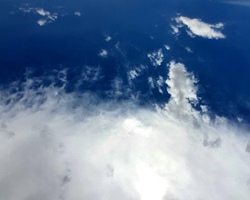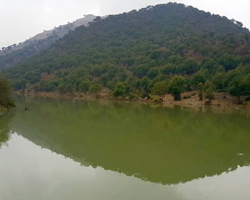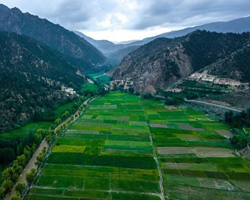WATER
Water is a vital elixir for all living beings.
Although it is a renewable resource, scarcity of quality water is felt in many parts of the world. We need water to grow food, keep clean, generate electricity, control fire, and last but not the least, we need it to stay alive.
World Ocean water covers about 75 percent of the surface of the earth. Therefore, the earth is called the water planet. Ocean water is saline and not fit for human consumption. Fresh water is just about 2.7 percent of the total water. Global warming and perpetuating water pollution have made a considerable part of available freshwater unfit for human consumption. As a result, water is very scarce.
Steps need to be taken to conserve water. Water is renewable, but its overuse and pollution make it unfit for use. Sewage, industrial use, chemicals, etc. pollute water with nitrates, metals, and pesticides.
Use of Water Resources
Water resources are used for agricultural, industrial, domestic, recreational, and environmental activities. Majority of the uses require fresh water.
However, about 97 percent of water found on the earth is salt water and only three percent is fresh water. A little over two-thirds of the available fresh water is frozen in glaciers and polar ice caps. The remaining freshwater is found mainly as groundwater and a negligible portion of it is present on the ground or in the air.
Following is a brief account of how water is used in different sectors.
AGRICULTURAL USE
Agriculture accounts for 69 percent of all water consumption basically in agricultural economies like India. Agriculture, therefore, is the largest consumer of the Earth’s available freshwater.
By 2050, the global water demand of agriculture is estimated to increase by a further 19% due to irrigational needs. Expanding irrigation needs are likely to put undue pressure on water storage. It is still inconclusive whether further expansion of irrigation, as well as additional water withdrawals from rivers and groundwater, will be possible in future.
INDUSTRIAL USE
Water is the lifeblood of the industry. It is used as a raw material coolant, a solvent, a transport agent, and as a source of energy. Manufacturing industries account for a considerable share in the total industrial water consumption. Besides, paper and allied products, chemicals and primary metals are major industrial users of water.
Worldwide, the industry accounts for 19 percent of total consumption. In industrialized countries, however, industries use more than half of the water available for human use.
DOMESTIC USE
It includes drinking, cleaning, personal hygiene, garden care, cooking, washing of clothes, dishes, vehicles, etc. Since the end of World War II there has been a trend of people moving out of the countryside to the ever-expanding cities. This trend has important implications on our water resources.
Government and communities have had to start building large water-supply systems to deliver water to new populations and industries. Of all water consumption in the world, domestic use accounts for about 12 percent.
USE FOR HYDROPOWER GENERATION
Electricity produced from water is hydropower. Hydropower is the leading renewable source of electricity in the world. It accounts for about 16 percent of total electricity generation globally. There are many opportunities for hydropower development throughout the world.
Today, the leading hydropower generating countries are China, the US, Brazil, Canada, India, and Russia.
USE FOR NAVIGATION AND RECREATION
Navigable waterways are defined as watercourses that have been or may be used for transport of interstate or foreign commerce. Agricultural and commercial goods are moved on water on a large scale in a number of regions in the world.
Water is also used for recreational purposes such as boating, swimming, and sporting activities. These uses affect the quality of water and pollute it. Highest priority should be given to public health and drinking water quality while permitting such activities in reservoirs, lakes, and rivers.
Overutilization of Surface and Ground Water
Water scarcity has become a burning global issue. The UN has held several conventions on water in recent decades. Continuous overutilization of surface and ground water has led to virtual water scarcity in the world today.
The depleting sources for high growth in human population over the centuries and increased man-induced water pollution across the world have created unforeseen water scarcity around the globe. As a result, there has been continuous overutilization of the existing water sources due to mammoth growth in world population.
Groundwater is the major source of water in many parts of the world. However, there has been continuous depletion of this source due to its overexploitation by rising human population and the rapid rise in industrialization and urbanization in modern times.
Consequences of Overutilization
Water scarcity now becomes an important topic in international diplomacy. From village to the United Nations, water scarcity is a widely-discussed topic in decision making.
Nearly three billion people in the world suffer from water scarcity. International, intrastate and regional rivalries on water are not new to world. The ongoing Jordan River conflict, Nile River conflict, and Aral Sea conflict are cases in point. The intra-state issues such as Cauvery Water dispute in South India, 2000 Cochabamba protests in Bolivia is still a simmering cauldron causing periodic tension at the national and regional levels.
According to World Health Organization (WHO) sources, a combination of rising global population, economic growth and climate change means that by 2050 five billion (52%) of the world’s projected 9.7 billion people will live in areas where fresh water supply is under pressure. Researchers expect about 1 billion more people to be living in areas where water demand exceeds surface-water supply.
CLIMATE CHANGE
Scientists, environmentalists, and biologists worldwide are now alarmed that climate change can have an impact on the drainage pattern and hydrological cycle on the earth thereby severely affecting the surface and groundwater availability.
Climate change is believed to rise the global temperature at an increasing pace. Temperature increase affects the hydrological cycle by directly increasing evaporation of available surface water and vegetation transpiration.
As a result, precipitation amount, timing and intensity rates are largely affected. It impacts the flux and storage of water in surface and subsurface reservoirs.
FLOODS & DRAUGHTS
Floods and droughts are two well-known natural hazards in the world. The former is due to excess in water flow and the latter is due to scarcity of water.
The amount of rainfall received by an area varies from one place to another depending on the location of the place. In some places it rains almost throughout the year whereas in other places it might rain for only few days. India records most of its rainfall in the monsoon season.
Heavy rains lead to rise in the water level of rivers, seas, and oceans. Water gets accumulated in the coastal areas, which results in floods. Floods bring in extensive damage to crops, domestic animals, property and human life. During floods, many animals get carried away by the force of water and eventually die.
On the other hand, droughts set in when a particular region goes without rain for a long period of time. In the meantime, the soil will continuously lose groundwater by the process of evaporation and transpiration. Since this water is not brought back to earth in the form of rains, the soil becomes very dry.
The level of water in the ponds and rivers goes down and in some cases water bodies get dried up completely. Ground water becomes scarce and this leads to droughts. In drought conditions, it is very difficult to get food and fodder for the survival. Life gets difficult and many animals perish in such conditions.
Frequent floods and droughts are mostly due to climate change and global warming. Various environmental organizations world over are of the view that climate change is a long-term change in weather patterns, either in average weather conditions or in the distribution of extreme weather events.









